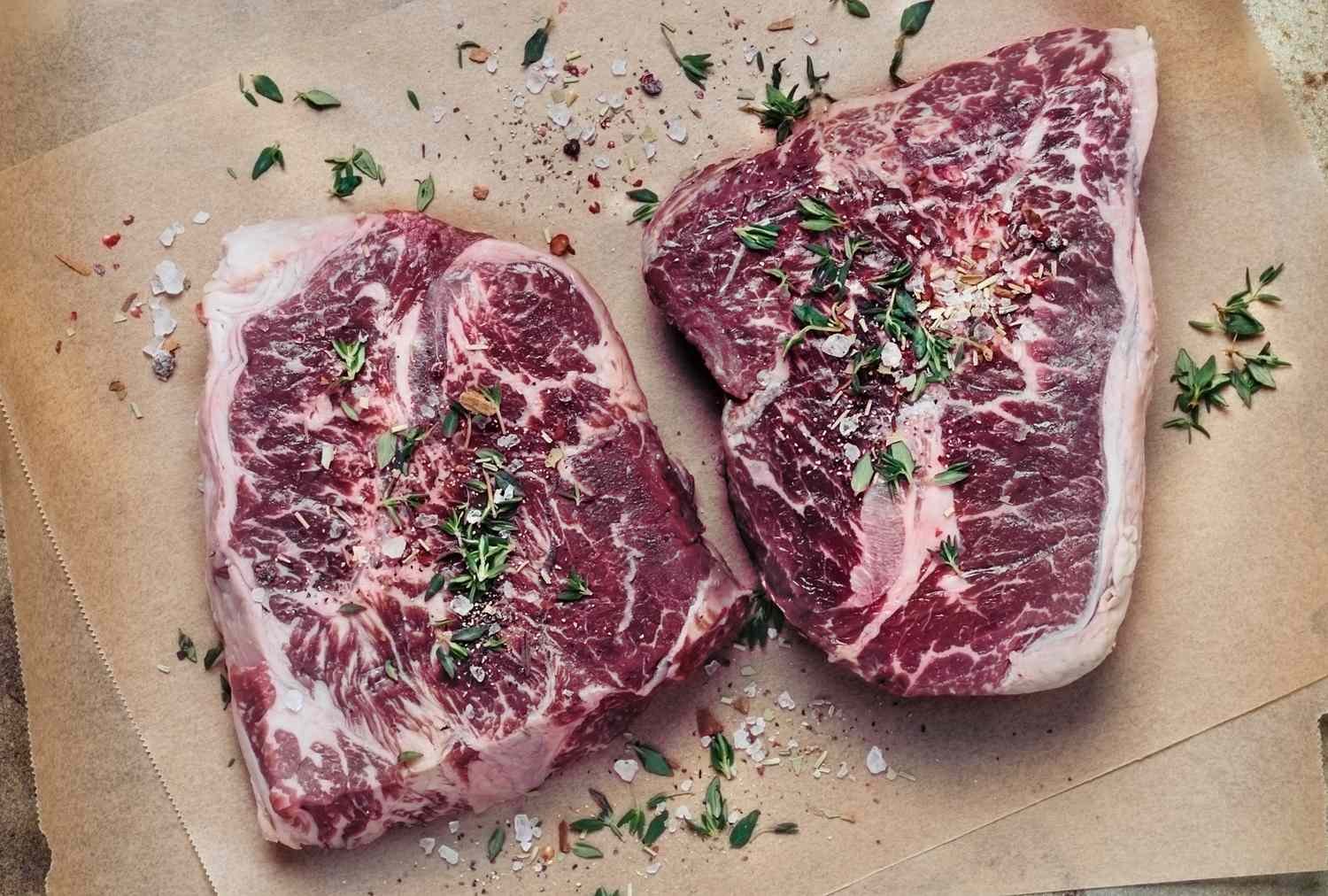Home Cooks Are Buying Whole Cows and Saving Big, Here’s How

:max_bytes(150000):strip_icc():format(jpeg)/ms-raw-steak-getty-ab5e70283a8a415997706883fe32801f.jpg)
Key Points
- Buying a whole or half cow can save you 20 to 30 percent per pound compared to grocery store prices, while delivering premium, locally raised meat.
- It’s an upfront investment that requires planning—budget for costs, confirm freezer space, and understand the true price per pound.
- Beyond savings, bulk buying supports local farmers, reduces waste, and connects you to the full range of cuts from one animal.
If buying a whole or half cow sounds like something your grandparents did right after they brought home their first chest freezer, we’re here to tell you it might be time to do as they did. The old-fashioned practice can save you money, reduce waste, and deliver better-quality meat to your table. We spoke to experts to learn more about the practical, financial, and culinary benefits and to find out what you need to know before buying meat in bulk.
When Buying in Bulk Actually Saves You Money
“When you buy meat in bulk, you get all the goodies—steaks, ground, roasts—at one price per pound,” says Michele Thor, executive director of the Good Meat Project, a nonprofit that helps consumers connect with local farmers. According to the Good Meat Project, buying meat in bulk can be 20 to 30 percent cheaper than purchasing individual cuts at the grocery store. Beef averages between $7.50 and $10 per pound, depending on your region and the farm. “You’re paying one price per pound for everything, steaks, tenderloin, and ground,” Thor said.
Before you click buy, though, it’s essential to do a true apples-to-apples comparison. “Beef is traditionally sold by hanging weight, which is more than what you actually take home,” explains financial coach and accredited financial counselor. Annie Hanson. “To find the real price per pound, divide the total cost by the packaged weight, not the hanging weight.”
Buying a side of beef also requires planning for an upfront investment. You’ll likely pay the farmer and the butcher separately, and the total cost can run into the hundreds or low thousands of dollars, depending on the share size. “You’re paying for a year’s worth of meat at once,” Hanson says. “So it’s a great option if you budget for it ahead of time.”
Making the Most of Every Cut
That upfront cost comes with major rewards: variety and quality. “Buying a whole animal is like getting a CSA box full of cuts you may have never cooked with before,” says Thor. “One of the most important benefits of buying meat in bulk is that all this meat comes from one animal, unlike ground meat from a grocery store, which can contain meat from hundreds of animals.”
In addition to family favorites such as ground beef, steaks, and roasts, you’ll get cuts such as short ribs, brisket, shanks, or oxtail. You may even receive bones for broth or organ meats like heart and tongue.
Colorado Craft Beef farmer Kara Smith says on their ranch, they’ve been leaning into offering whole, half, and quarter beef options, and that one of her favorite things is teaching customers about those different cuts. “Cuts like hanger steak, picanha, flat iron, oxtail, and teres major are incredible when cooked right but often overlooked,” she says. “They offer exceptional flavor, unique textures, and versatility in recipes. Buying a whole or half animal is a great way to explore those cuts and discover new favorites.”
Buying a Whole Cow Invests In Your Local Community
Beyond the potential savings, buying meat in bulk offers other rewards, especially for farmers. “Selling half or whole animals allows us to strengthen the relationship between rancher and customer and keep more of the animal in use, reducing waste,” says Smith. “It also provides financial stability for the ranch and supports long-term stewardship of the land. For customers, it’s an investment in quality, transparency, and the story behind their food.”
It also strengthens local economies and small businesses by putting money directly in the hands of farmers and butchers, keeping your food rooted in your own community rather than outsourcing to the global supply chain.
Smith notes that buying locally is also about connections. “Selling whole or half animals is more than beef—it’s about connecting people to the land, to tradition, and to intentional practices,” they say. “In a world of disconnected supply chains, that connection matters.”
It can also reduce waste by ensuring every part of the animal is used.
How Much to Buy and How to Store
Buying a half or whole cow isn’t simply a financial commitment; it’s also a commitment to space. Buying meat in bulk requires a different way of thinking about purchasing food. You’ll need to plan and have enough freezer space for the meat you bring home. A typical quarter share of beef yields about 100 to 130 pounds of packaged meat. That requires roughly four cubic feet of freezer space. A whole animal can fill a large chest freezer.
Smith encourages first-time buyers to be realistic. “Consider your household size, how often you cook beef, and freezer space. We recommend having portion sizes cut and frozen so meals are easy to plan and beef stays fresh,” they say.
The amount of beef was a challenge for Mike Salguero, founder and CEO of ButcherBox, when he and his wife first bought a half cow. “I had so much, I ended up giving it away to colleagues.” That experience inspired him to launch ButcherBox, a subscription-based meat delivery service as a way for people to access high-quality, grass-fed meat in manageable portions.
Salguero doesn’t necessarily recommend everyone buy a whole cow, especially without the freezer space or cooking curiosity to use every cut.
“Most households have a handful of cuts they really enjoy,” he says. “If you do buy a share, you’ll discover cuts like flank, tri-tip, or flat iron steaks that pack incredible flavor when prepared well.”
If that sounds daunting, consider sharing the meat with friends or family. “Splitting a portion of an animal makes it much more affordable—and it’s a wonderful way to bond with friends,” Thor adds.
How Much Freezer Space You Really Need
The Good Meat Project breaks down how much freezer space you’ll need for bulk buying meat in their Good Meat Breakdown®, but in general:
- Quarter cow: ~100–130 lbs of beef requires about 4 cubic feet of freezer space
- Half a cow: ~200–250 lbs of beef requires about 6-10 cubic feet of freezer space
- Whole cow: ~400–500 lbs of beef requires about 12 plus cubic feet of freezer space
And yes, your grandmother was right: chest freezers are incredibly handy. But today, smaller upright or energy-efficient models make storing bulk meat feasible even in modest kitchens.
How Long the Meat Lasts In the Freezer
According to the Good Meat Project, beef can be frozen for 9 to 12 months; ground meats should be consumed within 6 months.
How to Buy a Whole or Half Cow
It’s easier to find a farm to buy a whole cow from than you think, but before you do, there are a few things you should keep in mind:
- Freezer space: Remember, you’ll need about 1 cubic foot per 25–30 pounds of meat.
- Upfront payment: Expect to pay the farmer and butcher separately unless the farm bundles costs.
- Storage time: Properly wrapped meat will last 6–12 months in a deep freeze.
- Timing: Fall is a popular time to buy, when farms harvest and families plan for winter.
- Community: If the cost or space is too much, share a cow with friends or neighbors.
The Good Meat Project’s Good Meat Finder allows you to search for farmers offering quarter, half, and whole shares of beef, and you can even search by woman-owned farms, regenerative agriculture-focused ranches, and more.
What to Ask
You’ll also want to ask a few questions to ensure you get exactly what you expect, and what your freezer can handle. For instance, ask:
- What’s included in the price? Does it cover butchering and packaging, or are those separate?
- Can I choose my cuts? Some farmers will allow you to select some of the cuts?
- How is the meat raised?
- When will it be ready? Keep in mind that butchering and processing can take time.
What’s old-school new again might just be the smartest and most sustainable way to shop. As Salguero puts it, “Whether you buy from a farmer or a trusted meat service, what matters most is knowing where your meat comes from and supporting systems that honor both the animal and the environment.”



